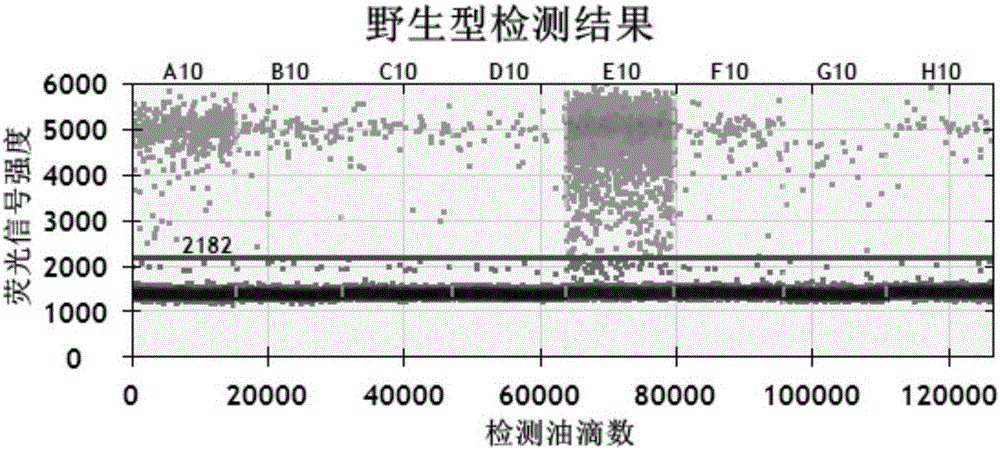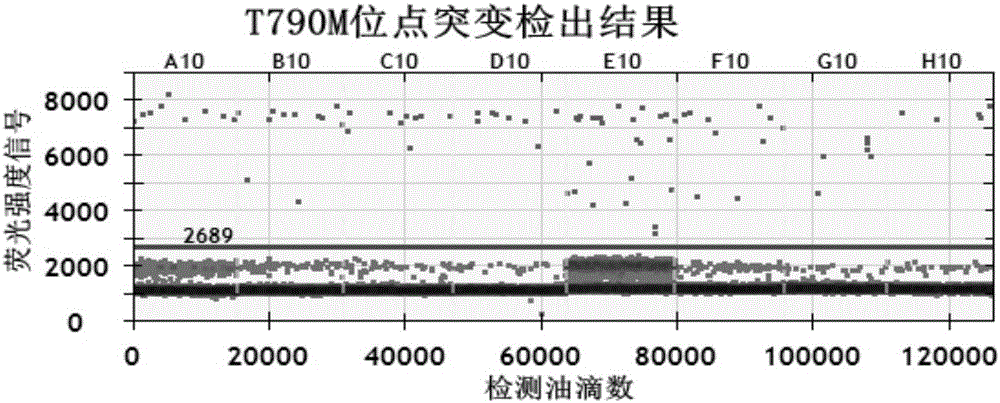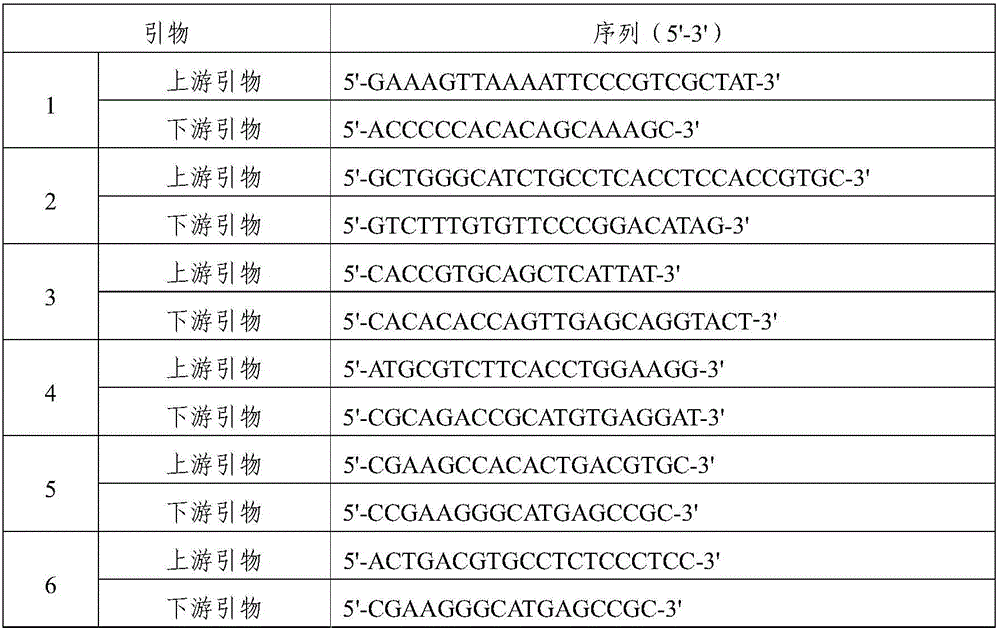Specific primer and probe for detecting T790M locus of EGFR gene
A specific and probe technology, applied in the field of molecular biology, can solve the problem of not being suitable for the detection of free nucleic acid in blood circulation, and achieve the effect of improving detection sensitivity, improving specificity, and eliminating background fluorescence.
- Summary
- Abstract
- Description
- Claims
- Application Information
AI Technical Summary
Problems solved by technology
Method used
Image
Examples
Embodiment 1
[0048] This example is used to illustrate the screening process of the specific primers of the present invention.
[0049] Primer design: The DNA sequence of the human EGFR (NM_005228.3) gene was searched from NCBI, and the upstream and downstream primers capable of amplifying the fragment containing the mutation site (c.2369C>T) were designed, and 6 pairs of them were selected. The size of the fragments amplified by the primers ranged from 50bp to 200bp; the 6 pairs of primers were synthesized; since different amplification lengths would affect the sensitivity of the experimental scheme, the PCR technique was used to test the 6 pairs of primers. The primer sequences are shown in Table 1 shown.
[0050] Table 1
[0051]
[0052] Amplification system of digital PCR amplification:
[0053] 2×ddPCR master mix 10 μl master mix (QX2002xBufferControlkit, BIO-RAD), 10 μM upstream primer 1 μl, 10 μM downstream primer 1 μl, 2 μM wild-type probe 2 μl, 2 μM mutant probe 2 μl, water ...
Embodiment 2
[0060] This example is used to illustrate the specific probes of the present invention.
[0061] For the specific primer obtained in Example 1, a specific probe used in conjunction with it was designed, which can be used together when detecting the T790M mutation site of the EGFR gene.
[0062] The nucleotide sequence of the probe is:
[0063] Wild type probe:
[0064] VIC:5'-VIC-TGAGCTGCGTGATGAGC-MGB-NFQ-3';
[0065] Mutant probes:
[0066] FAM: 5'-FAM-TGAGCTGCATGATGAGC-MGB-NFQ-3'.
[0067] Concentration optimization of the designed probes:
[0068] Using the primers and optimized concentrations screened in Example 1, the template concentrations were 0.01ng, 0.1ng and 1ng, respectively. Use different probe concentrations, respectively 50nM, 100nM and 250nM, to detect the three concentrations of templates using QPCR. The results show that when the probe concentration is 50nM, the CT value of the low-concentration template QPCR appears the earliest, so it is the most suita...
Embodiment 3
[0070] This example is used to illustrate the application of the specific primers and probes of the present invention.
[0071] 1. Specificity and sensitivity experiments
[0072] In this experiment, the sample used to detect the wild-type probe is a fragment containing the wild-type EGFR gene; the positive sample used to detect the mutant probe is the EGFR gene fragment containing only the T790M mutation site. And using the two DNA fragments as templates, the specificity and sensitivity of the probes were tested with a droplet digital PCR system.
[0073] Detection system:
[0074] The detection system for the mutation site suitable for the droplet digital PCR system is: 10 μl of 2×ddPCR master mix, 1 μl of 10 μM upstream primer, 1 μl of 10 μM downstream primer, 2 μl of 2 μM wild-type probe, 2 μl of 2 μM mutant probe , water 3 μl, template 1 μl, a total of 20 μl.
[0075] Prepare the PCR detection system, and let it stand at room temperature for 3 minutes after configurati...
PUM
 Login to View More
Login to View More Abstract
Description
Claims
Application Information
 Login to View More
Login to View More - R&D
- Intellectual Property
- Life Sciences
- Materials
- Tech Scout
- Unparalleled Data Quality
- Higher Quality Content
- 60% Fewer Hallucinations
Browse by: Latest US Patents, China's latest patents, Technical Efficacy Thesaurus, Application Domain, Technology Topic, Popular Technical Reports.
© 2025 PatSnap. All rights reserved.Legal|Privacy policy|Modern Slavery Act Transparency Statement|Sitemap|About US| Contact US: help@patsnap.com



